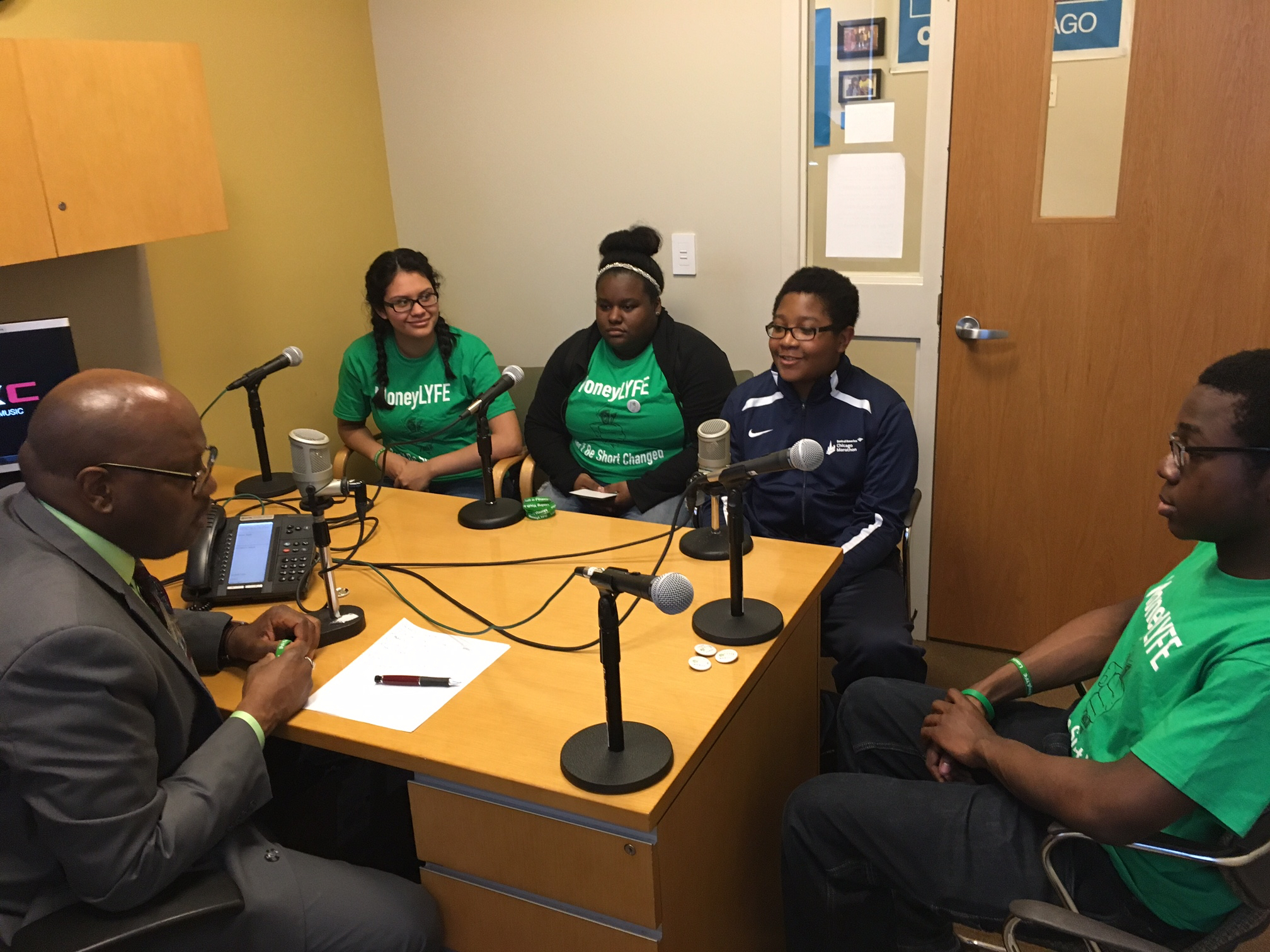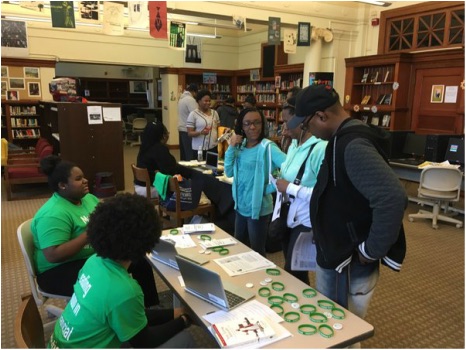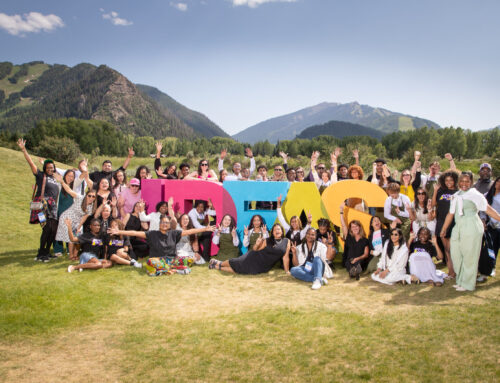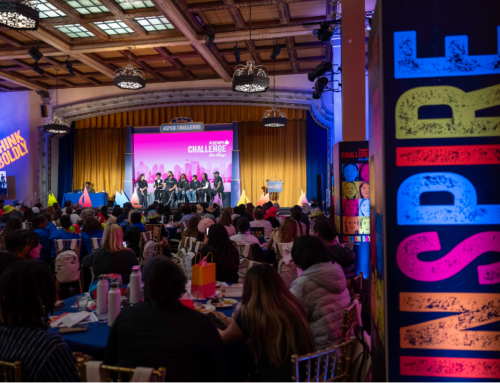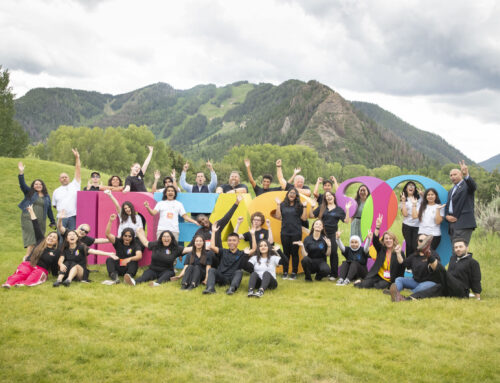Empowering Students and Spotlighting Their Success is Good for Chicago
This year I had the privilege of coaching eight amazing Chicago Public School (CPS) students for a competition called the Aspen Challenge. An arm of the Aspen Institute, the Aspen Challenge invited twenty CPS high schools to create solutions to six real-world problems— ranging from fixing food deserts to re-designing libraries — and present them in a competition. The competition ended just three weeks ago, and Roberto Clemente High School, Amundsen High School, and my school, Lindblom Math and Science Academy, won the competition and will travel to Aspen, Colorado to deliver solutions on a world-wide stage at the Aspen Ideas Festival this summer. I am thrilled by my students’ success and inspired by the entire process of the Aspen Challenge.
Coming from a small town, I’ve always felt that students get overlooked in a big district like Chicago. Our city’s newspapers cover professional athletes and city politicians: in my small town, high school athletes and successful students were front-page news. Why does the media flock to the negative and dramatic news of our district and not highlight the accomplishments of our students and teachers do? Despite the challenges they face living in some of the most dangerous and impoverished neighborhoods in our country, the students of Chicago are accomplishing big goals, and the Challenge gave us a venue to showcase just that.

Students at the Aspen Challenge Opening Forum, Soldier Field, Chicago.
The Aspen Institute invested a lot in our students. At the Opening Forum, teams traveled in coach buses to Soldier Field and walked into the Club Level where they saw posters of themselves and their school names on the walls, and long sleeve shirts and personalized name tags awaiting them at their tables. They heard speeches from CPS CEO Janice Jackson, former Secretary of Education Arne Duncan, and even Chance the rapper. A major highlight for all was when Congressman John Lewis implored everyone in the room to “Never give up!” on fighting for social justice.That day, the Aspen Institute made every one of our students feel important. There was no distinction between ranking of school or level of student. The opening forum gave students the confidence and exuberance to take on a challenge of their choice.
The Aspen Challenge felt like problem-based learning on steroids. My students chose a challenge that they felt would have the biggest impact on both our school and its community of Englewood: financial literacy. They held two bank fairs, taught a lesson on real-world finance to students at our neighborhood elementary school, and partnered with long-standing Englewood organizations to inform their peers and community residents about finance. While I was there to guide them along the way, they are ones who planned events, researched, displayed information, spoke one-on-one to adults about spending habits, and led classroom activities.
MoneyLYFE team members are interviewed by Dennis Snipe of WKKC 89.3 FM, Kennedy King College, Chicago (left). MoneyLYFE host an informational fair about financial literacy (right).
The process and outcome of the Aspen Challenge made me want to re-design the senior year for our high school students. I have taught in three high schools in CPS, two at the neighborhood level, and my current selective enrollment school. Most seniors in high school need only three or four credits to graduate according to CPS requirements, yet they are sitting in classes they don’t necessarily need or want. What if our seniors were becoming leaders in our elementary schools on a daily basis through projects like the Aspen Challenge? What if for half the day seniors took the classes they needed and the other half they were solving problems in their communities?
The American K-12 system claims to prepare students for college, but the senior year is not the transition year I believe it should be. Students’ senior year looks much like any other year of high school and doesn’t prepare them for the completely different-looking college freshman year without school bells or adults setting the pace. The Aspen Challenge allowed my students to set their own limits, explore and become invested in the community, and manage their time appropriately. The learning experience they had cannot be achieved sitting in a desk in a classroom. CPS can continue emulate this model of instilling pride in our students no matter what school they attend — and to have partnered with Aspen to create such an environment was evidence that a step had been taken in the right direction.It is my hope that Chicago Public Schools can learn from the Aspen Challenge experience my students had and pilot a similar model for seniors in all of our high schools so that they can be well-prepared for the world ahead of them.
Gina Caneva is a twelve-year CPS veteran who works as a teacher-librarian and Writing Center Director at Lindblom Math and Science Academy. She is a National Board Certified teacher and Teach Plus Teaching Policy Fellowship alum.

